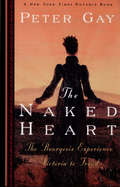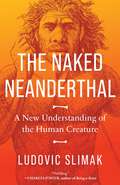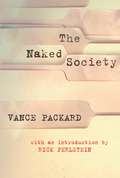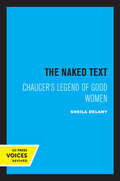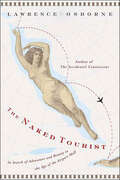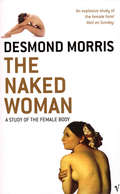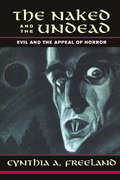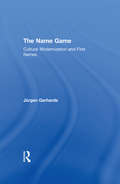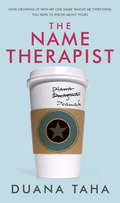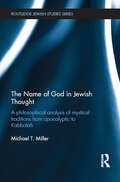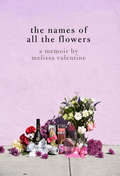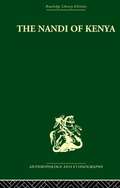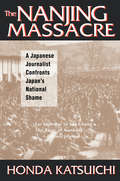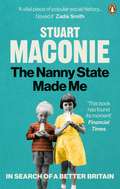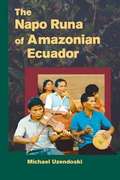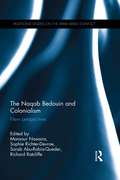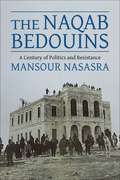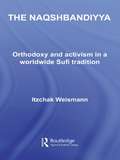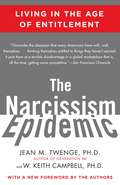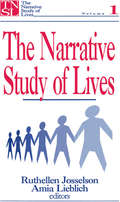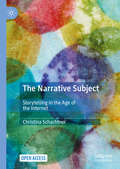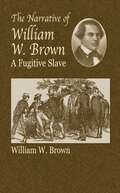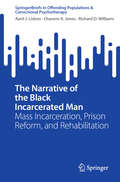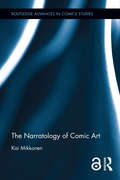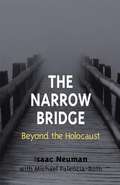- Table View
- List View
The Naked Heart: Victoria to Freud)
by Peter GayIn The Naked Heart, Peter Gay explores the bourgeoisie's turn inward. At the very time that industrialists, inventors, statesmen, and natural scientists were conquering new objective worlds, Gay writes, "the secret life of the self had grown into a favorite and wholly serious indoor sport." Following the middle class's preoccupation with inwardness through its varied cultural expressions (such as fiction, art, history, and autobiography), Gay turns also to the letters and confessional diaries of both obscure and prominent men and women. These revealing documents help to round out a sparkling portrait of an age.
The Naked Neanderthal: A New Understanding of the Human Creature
by Ludovic SlimakA riveting scientific journey exploring the enigma of the Neanderthal and the species&’ unique form of intelligence.What do we really know about our cousins, the Neanderthals? For over a century we saw Neanderthals as inferior to Homo Sapiens. More recently, the pendulum swung the other way and they are generally seen as our relatives: not quite human, but similar enough, and still not equal. Now, thanks to an ongoing revolution in palaeoanthropology in which he has played a key part, Ludovic Slimak shows us that they are something altogether different -- and they should be understood on their own terms rather than by comparing them to ourselves. As he reveals in this stunning book, the Neanderthals had their own history, their own rituals, their own customs. Their own intelligence, very different from ours. Slimak has travelled around the world for the past thirty years to uncover who the Neanderthals really were. A modern-day Indiana Jones, he takes us on a fascinating archaeological investigation: from the Arctic Circle to the deep Mediterranean forests, he traces the steps of these enigmatic creatures, working to decipher their real stories through every single detail they left behind. A thought-provoking adventure story, written with wit and verve, The Naked Neanderthal shifts our understanding of deep history -- and in the process reveals just how much we have yet to learn.
The Naked Society
by Rick Perlstein Vance PackardOriginally published in 1964, The Naked Society was the first book on the threats to privacy posed by new technologies such as modern surveillance techniques and methods for influencing human behavior. This all new edition of the book features an introduction by noted historian Rick Perlstein.
The Naked Text: Chaucer's Legend of Good Women
by Sheila DelanyA sequel to her seminal book on Chaucer’s House of Fame, Sheila Delany’s elegant and innovative study of Chaucer’s Legend of Good Women explores what it meant to be a reader and a writer, and to be English and a courtier, in the late fourteenth century. The richness of late medieval art, philosophy, and history are powerfully brought to bear on one of Chaucer’s most controversial works. So too are the insights of modern critical theory—semiotics, historicism, and gender studies especially—making this a unique achievement in medieval and Chaucerian studies. Delany’s strikingly original readings of Chaucer’s Orientalism, his sexual wordplay, his theological attitudes, and his treatment of sex and gender have given us a Chaucer for our time. This title is part of UC Press's Voices Revived program, which commemorates University of California Press’s mission to seek out and cultivate the brightest minds and give them voice, reach, and impact. Drawing on a backlist dating to 1893, Voices Revived makes high-quality, peer-reviewed scholarship accessible once again using print-on-demand technology. This title was originally published in 1994.
The Naked Tourist: In Search of Adventure and Beauty in the Age of the Airport Mall
by Lawrence OsborneFrom the theme resorts of Dubai to the jungles of Papua New Guinea, a disturbing but hilarious tour of the exotic east—and of the tour itselfSick of producing the bromides of the professional travel writer, Lawrence Osborne decided to explore the psychological underpinnings of tourism itself. He took a six-month journey across the so-called Asian Highway—a swathe of Southeast Asia that, since the Victorian era, has seduced generations of tourists with its manufactured dreams of the exotic Orient. And like many a lost soul on this same route, he ended up in the harrowing forests of Papua, searching for a people who have never seen a tourist. What, Osborne asks, are millions of affluent itinerants looking for in these endless resorts, hotels, cosmetic-surgery packages, spas, spiritual retreats, sex clubs, and "back to nature" trips? What does tourism, the world's single largest business, have to sell? A travelogue into that heart of darkness known as the Westernmind, The Naked Tourist is the most mordant and ambitious work to date from the author of The Accidental Connoisseur, praised by The New York Times Book Review as "smart, generous, perceptive, funny, sensible."
The Naked Woman: A Study Of The Female Body
by Desmond MorrisThe human female form is the brilliant end-point of millions of years of evolution, loaded with amazing adjustments and subtle refinements. It is the most remarkable organism on the planet. At different times and in different places, human societies have tried to improve on nature, modifying and embellishing the female form in a thousand different ways. In this new study, people-watcher Desmond Morris turns his skill and attention to the female form and takes the reader on a guided tour 'from head to toe'. Highlighting the evolutionary functions of biological features that all women share, Morris explores the enhancements and constraints that human societies have developed in the quest for control and perfection of the female form. Written from a zoologist's perspective and packed full of scientific fact, fascinating anecdote and thought-provoking conclusions, The Naked Woman builds on Desmond Morris's unrivalled experience as an observer of the human animal.
The Naked and the Undead: Evil and the Appeal of Horror
by Cynthia A. FreelandHorror is often dismissed as mass art or lowbrow entertainment that produces only short-term thrills. Horror films can be bloody, gory, and disturbing, so some people argue that they have bad moral effects, inciting viewers to imitate cinematic violence or desensitizing them to atrocities. In The Naked and the Undead: Evil and the Appeal of Horror, Cynthia A. Freeland seeks to counter both aesthetic disdain and moral condemnation by focusing on a select body of important and revealing films, demonstrating how the genre is capable of deep philosophical reflection about the existence and nature of evil-both human and cosmic. In exploring these films, the author argues against a purely psychoanalytic approach and opts for both feminist and philosophical understandings. She looks at what it is in these movies that serves to elicit specific reactions in viewers and why such responses as fear and disgust are ultimately pleasurable. The author is particularly interested in showing how gender figures into screen presentations of evil. The book is divided into three sections: Mad Scientists and Monstrous Mothers, which looks into the implications of male, rationalistic, scientific technology gone awry; The Vampire’s Seduction, which explores the attraction of evil and the human ability (or inability) to distinguish active from passive, subject from object, and virtue from vice; and Sublime Spectacles of Disaster, which examines the human fascination with horror spectacle. This section concludes with a chapter on graphic horror films like The Texas Chainsaw Massacre. Written for both students and film enthusiasts, the book examines a wide array of films including: The Silence of the Lambs, Repulsion, Frankenstein, The Fly, Dead Ringers, Alien, Bram Stoker’s Dracula, Interview with the Vampire, Frenzy, The Shining, Eraserhead, Hellraiser, and many others.
The Name Game: Cultural Modernization and First Names
by Jürgen GerhardsFrom decade to decade, significant changes occur in the choice of first names for children. One-time favorites are perceived as old fashioned and replaced by new choices. In The Name Game, Jurgen Gerhards shows that shifts in the choice of names are based on more than arbitrary trends of fashion. Instead, he demonstrates, they are determined by larger currents in cultural modernization. Using classic tools of sociology, Gerhards focuses on changing atterns of first names in Germany from the end of the nineteenth century to the end of the twentieth, using these as an indicator of cultural change. Among the influences he considers are religion, and he notes a trend toward greater secularization in first names. He considers the extent to which Christian names have been displaced, and whether the process is similar for Catholics and Protestants. He traces the impact of different political regimes (Second Empire, Weimar Republic, Third Reich, West Germany, East Germany) and the accompanying rise and fall of German nationalist sentiment. He also investigates the dissolution of the family as a unit of production, and its impact on the naming of children. He shows that the weakening of traditional ties of religion, nation, and family has led to greater individuation and greater receptivity toward foreign first names. Gerhards concludes with a discussion of whether the blurring of gender and sex roles is reflected in the decrease of gender-specific names. Written in a lucid, approachable style, The Name Game will be of interest not only to sociologists and cultural studies specialists, but also non-professionals, especially parents who are interested in reflecting on the process of name giving.
The Name Therapist: How Growing Up with My Odd Name Taught Me Everything You Need to Know about Yours
by Duana TahaWhat's a "stripper" name? For that matter, what's a high-class name? How do you tell the difference? Why does everyone call them "baby" names when they follow us through our whole lives? And can your name determine your destiny? From a television screenwriter and contributor on the LaineyGossip.com blog comes a book about what names really mean, how we use them, and why they matter. A child of Irish and Egyptian immigrants to Canada, Duana Taha became fascinated by names, not least because hers felt awkward at best and impossible at worst. She believed that names explained not only who you were, but where you came from and who you could be. She became a name nerd, and later a name snob, before settling into the role she was born to play--a Name Therapist, giving straight talk baby-and-grown-up-name advice to just about everyone. In a romp through North American naming trends, traditions, and pop culture, Duana brings us the hilarious, insightful, and surprising truths about hipster names in Brooklyn and Malibu, and the most "intelligent" names at Harvard University; digs into the stereotypes about culture and class where names are concerned; and heads backstage to find out the stories behind those supposed stripper names. And if you don't know what a Starbucks name is, Duana points out why you obviously never needed one. The Name Therapist's explorations will help you understand your feelings about your own name, whether it's one you share with millions (hi, Jennifer!), or one you grew up waiting in vain for the Romper Room host to say. Would you, by any other name, still be you? From the Hardcover edition.
The Name of God in Jewish Thought: A Philosophical Analysis of Mystical Traditions from Apocalyptic to Kabbalah (Routledge Jewish Studies Series)
by Michael T MillerOne of the most powerful traditions of the Jewish fascination with language is that of the Name. Indeed, the Jewish mystical tradition would seem a two millennia long meditation on the nature of name in relation to object, and how name mediates between subject and object. Even within the tide of the 20th century’s linguistic turn, the aspect most notable in – the almost entirely secular - Jewish philosophers is that of the personal name, here given pivotal importance in the articulation of human relationships and dialogue. The Name of God in Jewish Thought examines the texts of Judaism pertaining to the Name of God, offering a philosophical analysis of these as a means of understanding the metaphysical role of the name generally, in terms of its relationship with identity. The book begins with the formation of rabbinic Judaism in Late Antiquity, travelling through the development of the motif into the Medieval Kabbalah, where the Name reaches its grandest and most systematic statement – and the one which has most helped to form the ideas of Jewish philosophers in the 20th and 21st Century. This investigation will highlight certain metaphysical ideas which have developed within Judaism from the Biblical sources, and which present a direct challenge to the paradigms of western philosophy. Thus a grander subtext is a criticism of the Greek metaphysics of being which the west has inherited, and which Jewish philosophers often subject to challenges of varying subtlety; it is these philosophers who often place a peculiar emphasis on the personal name, and this emphasis depends on the historical influence of the Jewish metaphysical tradition of the Name of God. Providing a comprehensive description of historical aspects of Jewish Name-Theology, this book also offers new ways of thinking about subjectivity and ontology through its original approach to the nature of the name, combining philosophy with text-critical analysis. As such, it is an essential resource for students and scholars of Jewish Studies, Philosophy and Religion.
The Names of All the Flowers: A Memoir
by Melissa ValentineA “poignant, painful, and gorgeous” memoir that explores siblinghood, adolescence, and grief for a family shattered by loss (Alicia Garza, cocreator, Black Lives Matter).Melissa and her older brother Junior grow up running around the disparate neighborhoods of 1990s Oakland, two of six children to a white Quaker father and a black Southern mother. But as Junior approaches adolescence, a bullying incident and later a violent attack in school leave him searching for power and a sense of self in all the wrong places; he develops a hard front and falls into drug dealing. Right before Junior’s twentieth birthday, the family is torn apart when he is murdered as a result of gun violence.The Names of All the Flowers connects one tragic death to a collective grief for all black people who die too young. A lyrical recounting of a life lost, Melissa Valentine’s debut memoir is an intimate portrait of a family fractured by the school-to-prison pipeline and an enduring love letter to an adored older brother. It is a call for justice amid endless cycles of violence, grief, and trauma, declaring: “We are all witness and therefore no one is spared from this loss.”“A portrait of a place, a person who died too young, the systems that led to that death, and the keen insights of the author herself. Lyrical and smart, with appropriate undercurrents of rage.” —Emily Raboteau, author of Searching for Zion“Eloquently poignant.” —Kirkus Reviews
The Nandi of Kenya
by G. W. HuntingfordThis book examines the political structure of the Nandi tribe in the first half of the twentieth century and contains chapters on the following: · Land divisions and local authorities · Age-sets · War organisation · Administrative changes · Law · Religion. First published in 1953
The Nanjing Massacre: A Japanese Journalist Confronts Japan's National Shame (Studies Of The Pacific Basin Institute)
by Frank Gibney Katsuichi Honda Karen SandnessThis book is based on four visits to China between 1971 and 1989 by Honda Katsuichi, an investigative journalist for Asahi Shimbun. His aim is to show in pitiless detail the horrors of the Japanese Army's seizure and capture of Nanjing in December 1937. Unvarnished accounts of the testimony - Chinese victims and Japanese perpetrators - to the rape and slaughter are juxtaposed with public relations announcements of the Japanese Army as printed in various Japanese newspapers of the time. The bland announcements of triumphant victories stand in bitter contrast to the atrocities that actually took place on the scene. The story unfolds with horrible detail as we watch the triumphant progress of the Japanese army whose troops were bent on rape and killing in the so-called "heat of battle." Yet by recalling the testimony of Japanese soldiers and reporters who were on the scene, as well as reproducing dispatches by Japanese Army authorities at the time, Honda makes it clear that the atrocities were part of a studied effort directed by the Japanese high command to impress the Chinese people with the power of its army and the folly of resistance to it - the estimate of 300,000 killed in these "military operations" is no exaggeratoin. Honda has worked with other Japanese journalists and scholars who have attempted to reveal the truth of the Nanjing massacre, provoked by the efforts of right-wing Japanese, including, sadly, many government officials, to whitewash the whole incident, even to the point of contending that a "massacre" never happened. This gripping account of the atrocities and cover-up joins other exposes - Chinese and now German - in keeping alive the memory of this shameful event.
The Nanny State Made Me: A Story of Britain and How to Save it
by Stuart Maconie'He is as funny as Bryson and as wise as Orwell' ObserverIt was the spirit of our finest hour, the backbone of our post-war greatness, and it promoted some of the boldest and most brilliant schemes this isle has ever produced: it was the Welfare State, and it made you and I. But now it's under threat, and we need to save it.In this timely and provocative book, Stuart Maconie tells Britain’s Welfare State story through his own history of growing up as a northern working class boy. What was so bad about properly funded hospitals, decent working conditions and affordable houses? And what was so wrong about student grants, free eye tests and council houses? And where did it all go so wrong? Stuart looks toward Britain’s future, making an emotional case for believing in more than profit and loss; and championing a just, fairer society.
The Napo Runa of Amazonian Ecuador
by Michael UzendoskiBased upon historical and archival research, as well as the author's years of fieldwork in indigenous communities, Michael Uzendoski's theoretically informed work analyzes value from the perspective of the Napo Runa people of the Amazonian Ecuador. Written in a clear and readable style, The Napo Runa of Amazonian Ecuador presents theoretical issues of value, poetics, and kinship as linked to the author's intersubjective experiences in Napo Runa culture. Drawing on insights from the theory of gift and value, Uzendoski argues that Napo Runa culture personifies value by transforming things into people through a process of subordinating them to human relationships. While many traditional exchange models treat the production of things as inconsequential, the Napo Runa understand production to involve a relationship with natural beings (plants, animals, spirits of the forest), which are considered to be subjects that share spiritual substance, or samai. Throughout the book, value is revealed as the outcome of a complicated poetics of transformation by which things and persons are woven into kinship forms that define daily social and ritual life.
The Naqab Bedouin and Colonialism: New Perspectives (Routledge Studies on the Arab-Israeli Conflict)
by Sophie Richter-Devroe Mansour Nasasra Sarab Abu-Rabia-Queder Richard RatcliffeThe Naqab Bedouin and Colonialism brings together new scholarship to challenge perceived paradigms, often dominated by orientalist, modernist or developmentalist assumptions on the Naqab Bedouin. The past decade has witnessed a change in both the wider knowledge production on, and political profile of, the Naqab Bedouin. This book addresses this change by firstly, endeavouring to overcome the historic isolation of Naqab Bedouin studies from the rest of Palestine studies by situating, studying and analyzing their predicaments firmly within the contemporary context of Israeli settler-colonial policies. Secondly, it strives to de-colonise research and advocacy on the Naqab Bedouin, by, for example, reclaiming ‘indigenous’ knowledge and terminology. Offering not only a nuanced description and analysis of Naqab Bedouin agency and activism, but also trying to draw broader conclusion as to the functioning of settler-colonial power structures as well as to the politics of research in such a context, this book is essential reading for students and researchers with an interest in Postcolonial Studies, Development Studies, Israel/Palestine Studies and the contemporary Middle East more broadly.
The Naqab Bedouins: A Century of Politics and Resistance (Routledge Studies On The Arab-israeli Conflict)
by Mansour NasasraConventional wisdom positions the Bedouins in southern Palestine and under Israeli military rule as victims or passive recipients. In The Naqab Bedouins, Mansour Nasasra rewrites this narrative, presenting them as active agents who, in defending their community and culture, have defied attempts at subjugation and control. The book challenges the notion of Bedouin docility under Israeli military rule and today, showing how they have contributed to shaping their own destiny. The Naqab Bedouins represents the first attempt to chronicle Bedouin history and politics across the last century, including the Ottoman era, the British Mandate, Israeli military rule, and the contemporary schema, and document its broader relevance to understanding state-minority relations in the region and beyond. Nasasra recounts the Naqab Bedouin history of political struggle and resistance to central authority. Nonviolent action and the strength of kin-based tribal organization helped the Bedouins assert land claims and call for the right of return to their historical villages. Through primary sources and oral history, including detailed interviews with local indigenous Bedouins and with Israeli and British officials, Nasasra shows how this Bedouin community survived strict state policies and military control and positioned itself as a political actor in the region.
The Naqshbandiyya: Orthodoxy and Activism in a Worldwide Sufi Tradition (Routledge Sufi Series)
by Itzchak WeismannThe Naqshbandiyya is one of the most widespread and influential Sufi orders in the Muslim world. Having its origins in the Great Masters tradition of Central Asia almost a millennium ago, it played a significant role in the pre-modern history of the Indian subcontinent and the Ottoman Empire, and is still spreading today. This volume seeks to present a broad picture of the evolution of the ideas and organizational forms of the Naqshbandi order throughout its history. It combines a synthesis of the vast literature on the order with original research, and shall be an important contribution for those interested in Sufism, Islamic history and Muslim-Christian relations.
The Narcissism Epidemic: Living in the Age of Entitlement
by Jean M. Twenge W. Keith CampbellNarcissism--an inflated view of the self--is everywhere. Public figures say it's what makes them stray from their wives. Parents teach it by dressing children in T-shirts that say "Princess." Teenagers and young adults hone it on Facebook, and celebrity newsmakers have elevated it to an art form. And it's what's making people depressed, lonely, and buried under piles of debt. Jean Twenge's influential first book, Generation Me, spurred a national debate with its depiction of the challenges twenty- and thirty-somethings face in today's world--and the fallout these issues create for educators and employers. Now, Dr. Twenge turns her focus to the pernicious spread of narcissism in today's culture, which has repercussions for every age group and class. Dr. Twenge joins forces with W. Keith Campbell, Ph.D., a nationally recognized expert on narcissism, to explore this new plague in The Narcissism Epidemic, their eye-opening exposition of the alarming rise of narcissism and its catastrophic effects at every level of society. Even the world economy has been damaged by risky, unrealistic overconfidence. Drawing on their own extensive research as well as decades of other experts' studies, Drs. Twenge and Campbell show us how to identify narcissism, minimize the forces that sustain and transmit it, and treat it or manage it where we find it. Filled with arresting, alarming, and even amusing stories of vanity gone off the tracks (would you like to hire your own personal paparazzi?), The Narcissism Epidemic is at once a riveting window into the consequences of narcissism, a prescription to combat the widespread problems it causes, and a probing analysis of the culture at large.idemic is at once a riveting window into the consequences of narcissism, a probing analysis of the culture at large, and a prescription to combat the widespread problems caused by narcissism. As a society, we have a chance to slow the epidemic of narcissism once we learn to identify it, minimize the forces that sustain and transmit it, and treat it where we find it. Drawing on their own extensive research as well as decades of other experts' studies, Drs. Twenge and Campbell show us how.
The Narrative Study of Lives
by Dr Amia Lieblich Ruthellen H. JosselsonHow do we derive concepts from stories and then use these concepts to understand people? What would have to be added to transform story material from the journalistic or literary to the academic and theoretically enriching? Addressing these and other issues such as the interface between life as lived and the social times, distinguished contributors explore this emerging new field in this unique volume. Beginning with the philosophical framework that underlies the study of narrative, the book covers such questions as: what makes people want to preserve the stories of their past? What methods can be used to deconstruct a narrative text? Can what we learn from people's narratives of their past be used to account for their curr
The Narrative Subject: Storytelling in the Age of the Internet
by Christina SchachtnerThis open access book considers the stories of adolescents and young adults from different regions of the world who use digital media as instruments and stages for storytelling, or who make the media the subject of story telling. These narratives discuss interconnectedness, self-staging, and managing boundaries. From the perspective of media and cultural research, they can be read as responses to the challenges of contemporary society. Providing empirical evidence and thought-provoking explanations, this book will be useful to students and scholars who wish to uncover how ongoing processes of cultural transformation are reflected in the thoughts and feelings of the internet generation.
The Narrative of William W. Brown, a Fugitive Slave (African American)
by William Wells BrownThe Narrative of William W. Brown ranks alongside Frederick Douglass' memoirs as an influential force in the abolition movement and a lasting testimonial to the injustice of slavery. The simple, straightforward style of Brown's Narrative offers a sincere and moving account of life in bondage, recounted 13 years after the author's escape. Already a much-acclaimed antislavery speaker before he became an internationally renowned author, Brown followed up the success of this book with a travel book, a novel, and play -- all of which were firsts in their genres for an African-American writer. His Narrative remains his best-known work, maintaining its influence on countless readers.
The Narrative of the Black Incarcerated Man: Mass Incarceration, Prison Reform, and Rehabilitation (SpringerBriefs in Offending Populations & Correctional Psychotherapy)
by April J. Lisbon Charemi A. Jones Richard D. WilliamsThis book examines the criminalization of Black men and the need for penal system reform that allows for their mental, physical, financial, and emotional rehabilitation. Told through the lens of a former US Air Force veteran facing a history of trauma throughout childhood and into adulthood, it portrays widespread experiences Black males face as early as preschool, including unwarranted criminalization, psychiatric hospitalizations, and eventual incarceration. Ideal for practitioners working with Black men in schools, detention facilities, and within social advocacy groups, this book provides recommendations on how to change the narrative of incarcerated Black males in America to help them survive and thrive outside of prison.
The Narratology of Comic Art (Routledge Advances in Comics Studies)
by Kai MikkonenBy placing comics in a lively dialogue with contemporary narrative theory, The Narratology of Comic Art builds a systematic theory of narrative comics, going beyond the typical focus on the Anglophone tradition. This involves not just the exploration of those properties in comics that can be meaningfully investigated with existing narrative theory, but an interpretive study of the potential in narratological concepts and analytical procedures that has hitherto been overlooked. This research monograph is, then, not an application of narratology in the medium and art of comics, but a revision of narratological concepts and approaches through the study of narrative comics. Thus, while narratology is brought to bear on comics, equally comics are brought to bear on narratology.
The Narrow Bridge: BEYOND THE HOLOCAUST
by Isaac Neuman Michael Palencia-RothAs a boy studying Torah, Isaac Neuman learned to seek the spiritual lessons hidden in everyday life. Likewise, in this narrative of occupation and holocaust, he uncovers a core of human decency and spiritual strength that inhumanity, starvation, and even death failed to extinguish. Unlike many Holocaust memoirs that focus on physical suffering and endurance, The Narrow Bridge follows a spiritual journey. Neuman describes the world of Polish Jewry before and during the Holocaust, recreating the strong religious and secular personalities of his childhood and early youth in Zdunska Wola, Poland: the outcast butcher, Haskel Traskalawski; the savvy criminal-turned-entrepreneur Nochem Ellia; the trusted Dr. Lemberg, liaison to the German occupation government; and Neuman's beloved teacher, Reb Mendel. Through their stories, Neuman reveals the workings of a community tested to the limits of faith and human dignity. With his brother Yossel, Neuman was transported to the Poznan area, first to the Yunikowo work camp in May 1941, then on to St. Martin's Cemetery camp, where they removed gold jewelry and fillings from exhumed corpses. A string of concentration camps followed, each more oppressive than the last: Fürstenfelde, Auschwitz, Fünfteichen, Gross Rosen, Mauthausen, Wels, and Ebensee. In the midst of these horrors, the brothers kept their feet on the "narrow bridge" of life by holding to their faith, their memories, and each other. In the end, only Isaac survived. The Narrow Bridge celebrates symbolic victories of faith over brute force. The execution of Zdunska Wola's Jewish spiritual and intellectual leaders is trumped by an act of breathtaking courage and conviction. A secret Passover Seder is cobbled together from hoarded bits of wax, piecemeal prayers, and matzoh baked in delousing ovens. A dying fellow inmate gives Neuman his warm coat as they both lie freezing on the ground. Such rituals of faith and acts of kindness, combined with boyhood memories and a sense of spiritual responsibility, sustained Neuman through the Holocaust and helped him to reconstruct his life after the war. His story is a powerful testimony to an unquenchable faith and a spirit tried by fire.
